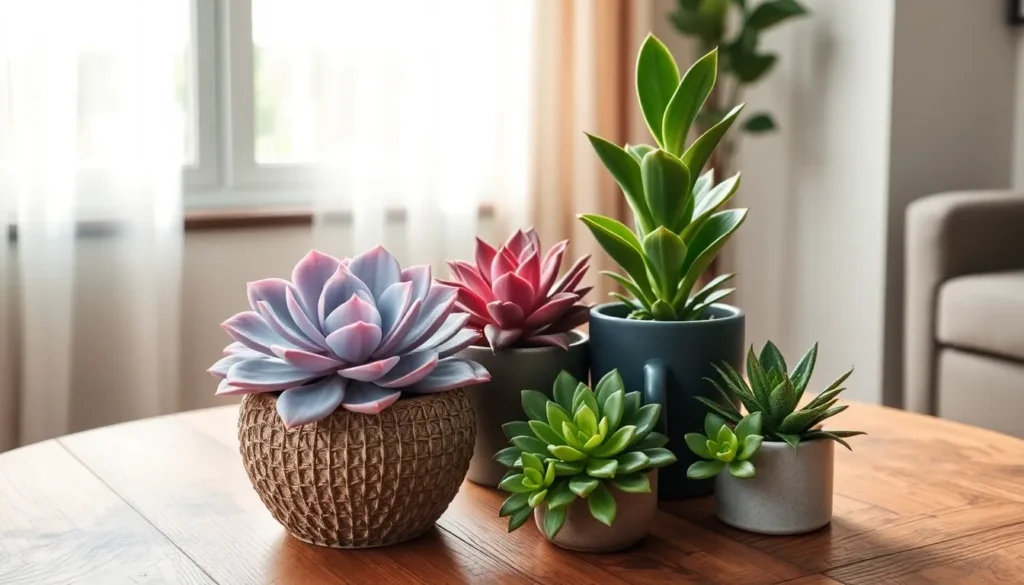Whether you’re just dipping your toes into the world of gardening or you’re a seasoned plant enthusiast, there’s a unique thrill in nurturing life right in your own home. For those looking to bring a touch of nature indoors, succulents are the perfect companions, offering resilience, beauty, and an undeniable charm. In this guide, we introduce you to the best succulents for beginners in low light, proving that even the dimmest corners of your home can bloom with life.
Succulents are famously forgiving, making them ideal for those still finding their green thumbs, as well as experienced gardeners eager to expand their indoor collections. This curated list highlights varieties that thrive in less-than-sunny spots, unlocking new possibilities for your living spaces. With our practical tips, you’ll soon discover the joy of watching your succulents flourish, even in the coziest, shadiest nooks of your home. Get ready to transform those shadowy corners into vibrant mini-oases, confident in the knowledge that success is just a leaf away.
Snake Plant ‘Moonshine’ (Sansevieria trifasciata ‘Moonshine’)
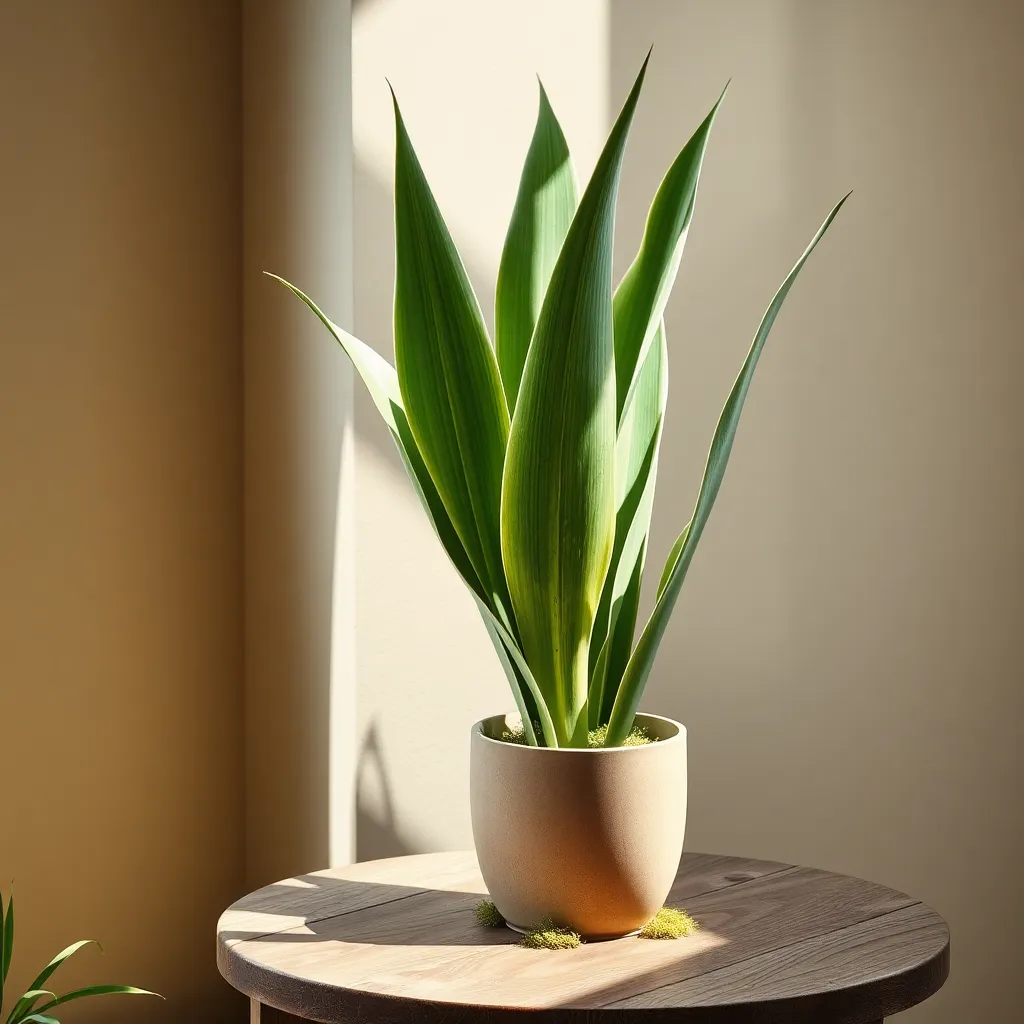
The Snake Plant ‘Moonshine’ is an excellent choice for beginners looking for a low-light tolerant succulent. Its striking, silvery-green leaves add a touch of elegance to any indoor space, making it both a decorative and low-maintenance option.
For optimal growth, place the ‘Moonshine’ in a spot that receives indirect light, though it can tolerate low light conditions as well. It’s essential to use a well-draining potting mix, ideally formulated for succulents or cacti, to prevent waterlogging.
Water this plant sparingly, allowing the soil to dry completely between waterings. Overwatering is the most common mistake gardeners make with the ‘Moonshine,’ so err on the side of underwatering, especially in lower light.
Advanced gardeners might consider repotting their ‘Moonshine’ every couple of years to refresh the soil and check root health. When repotting, choose a pot that’s slightly larger than the current one, and ensure it has drainage holes to facilitate excess water escape.
Panda Plant (Kalanchoe tomentosa)
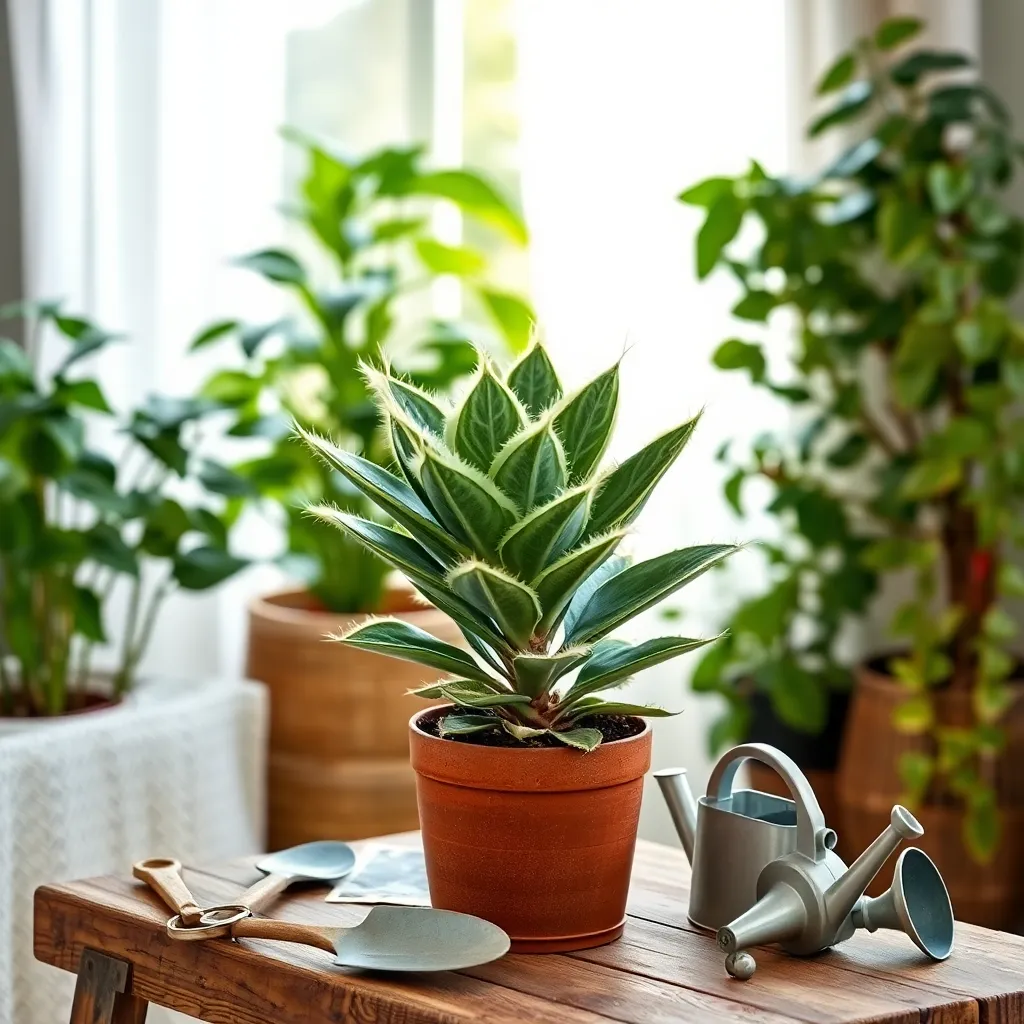
The Panda Plant (Kalanchoe tomentosa) is a charming succulent known for its fuzzy, silvery-green leaves edged with brown. It’s an excellent choice for beginners who have low-light conditions, making it ideal for apartments or offices.
To thrive, place your Panda Plant where it receives indirect sunlight or bright, filtered light. While it can tolerate low light, providing some natural light will help maintain its vibrant coloration and prevent leggy growth.
Watering Panda Plants is straightforward—allow the soil to dry out completely between waterings to prevent root rot. During the growing season in spring and summer, water every two to three weeks, and reduce this frequency in fall and winter.
For best results, plant your Panda Plant in a well-draining potting mix; a cactus or succulent mix is ideal. If you’re feeling adventurous, you can create your own blend with equal parts potting soil, sand, and perlite for optimal drainage.
String of Pearls (Senecio rowleyanus)
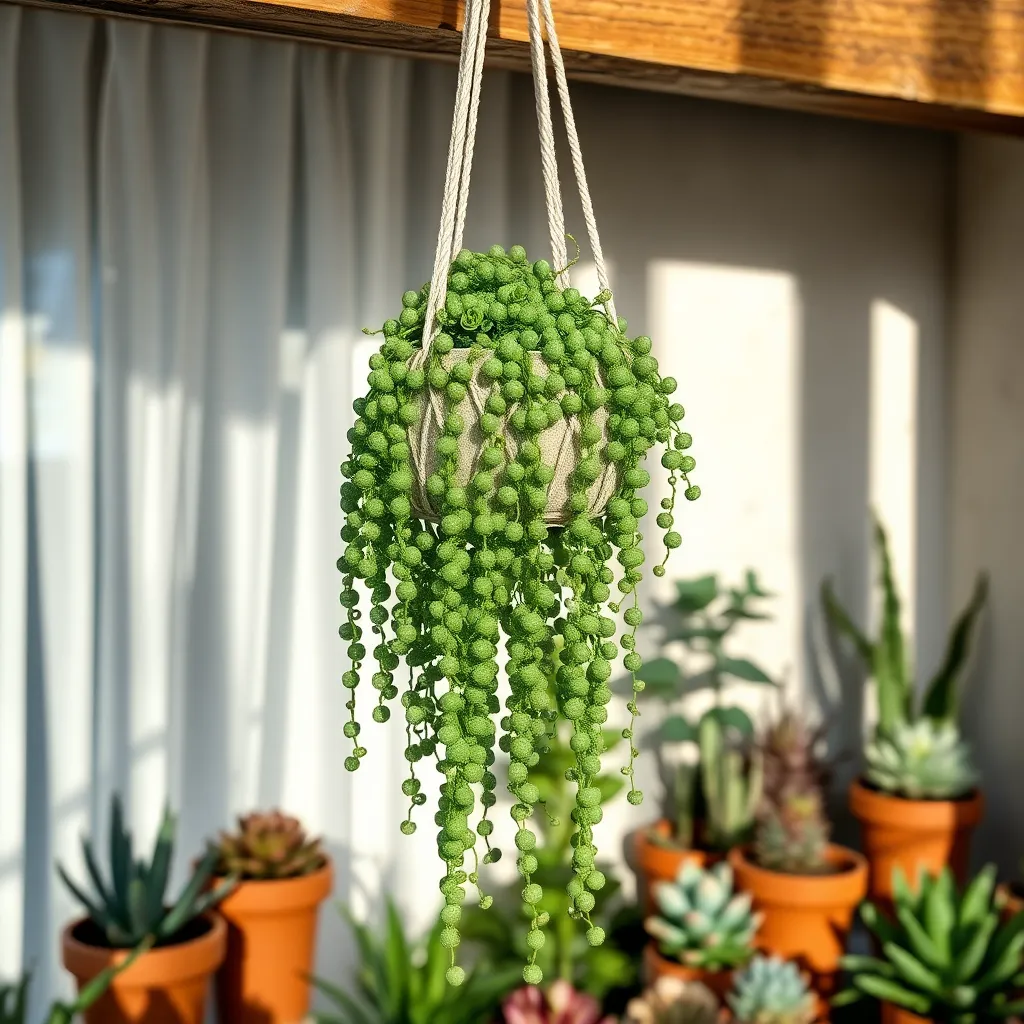
String of Pearls, known botanically as Senecio rowleyanus, is a captivating succulent perfect for low-light conditions. Its unique, bead-like leaves make it an attractive choice for both beginners and seasoned plant enthusiasts.
To successfully grow a String of Pearls indoors, place it in a spot with bright, indirect light, such as near a north-facing window. If natural light is scarce, consider using a grow light to supplement its lighting needs.
Watering is crucial for the health of your String of Pearls, but it must be done carefully. Allow the soil to dry out completely between waterings, as overwatering can lead to root rot, a common issue with this plant.
Use a well-draining succulent or cactus soil mix to ensure proper drainage and aeration. Adding perlite or pumice to your soil can further improve drainage, preventing water from sitting around the roots.
For those looking to propagate their String of Pearls, take cuttings of 4-6 inches and let them dry for a day before planting. This advanced tip helps ensure successful rooting, expanding your collection with little effort.
Gasteria ‘Little Warty’ (Gasteria bicolor var. liliputana)

Gasteria ‘Little Warty’ (Gasteria bicolor var. liliputana) is a fantastic choice for those seeking a succulent that thrives in low-light conditions. Its distinctive textured leaves not only add visual interest but also make it a resilient option for indoor gardening.
Start by placing your Gasteria in a location that receives indirect sunlight, such as a north-facing windowsill. This plant is highly adaptable to low-light environments, making it perfect for offices or rooms with minimal natural light.
Watering is straightforward and requires a bit of restraint. Ensure the soil is completely dry between waterings to prevent root rot, a common issue with succulents.
For optimal growth, use a well-draining cactus or succulent mix, which can be enhanced with perlite or pumice for improved aeration. Repotting every two to three years, using fresh soil, will help maintain the plant’s health and vigor.
Zebra Haworthia (Haworthiopsis attenuata)
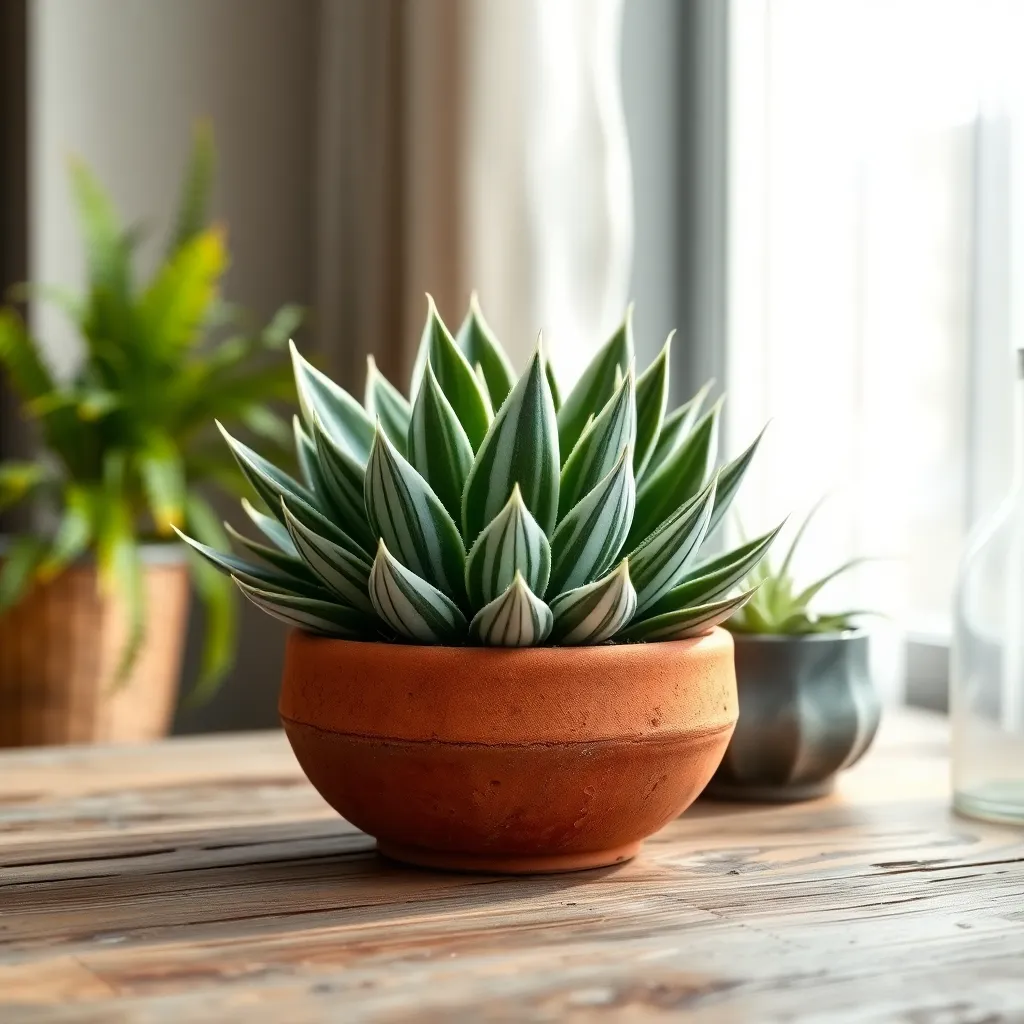
Another excellent choice for low-light conditions is the Zebra Haworthia, known for its distinctive white stripes and easy care. This succulent thrives with minimal attention, making it perfect for beginners who may be wary of high-maintenance plants.
To keep your Zebra Haworthia healthy, it’s crucial to use well-draining soil, such as a cactus mix, to prevent root rot. Water sparingly, allowing the soil to dry out completely between waterings, which is typically every two to three weeks.
Although these succulents can tolerate low light, they do best with indirect sunlight, which helps maintain their vivid coloration. If you notice the stripes fading, consider moving your plant to a slightly brighter spot to boost its vibrancy.
For those looking to propagate, Zebra Haworthias can be easily multiplied via offsets that grow at the base. Simply remove these pups and plant them in their own pots, using the same care regimen, to expand your succulent collection effortlessly.
Conclusion: Growing Success with These Plants
In exploring the world of succulents that thrive in low light, we’ve uncovered a rich tapestry of relationship concepts that can cultivate both your green thumb and relational skills. First, like the resilient Snake Plant, we discussed the importance of adaptability in relationships. The tenacious Jade Plant taught us about nurturing growth through patience. Our journey with the Haworthia highlighted the value of resilience, while the charming Zebra Plant reminded us to embrace uniqueness. Finally, the elegant Aloe Vera illustrated the healing power of relationships.
Now, it’s time to take action: choose one of these succulent types to bring into your home as a reminder of these relational principles. As you care for your new plant, reflect on how these qualities can enhance your interpersonal connections.
Bookmark this article to revisit these insights and reinforce your commitment to nurturing both your plants and relationships. Let your home become a sanctuary of growth and understanding.
Remember, with each step you take, you’re investing in a future where your relationships—like your succulents—flourish in any environment. Embrace the journey, and watch as your relationships grow greener and richer every day.

